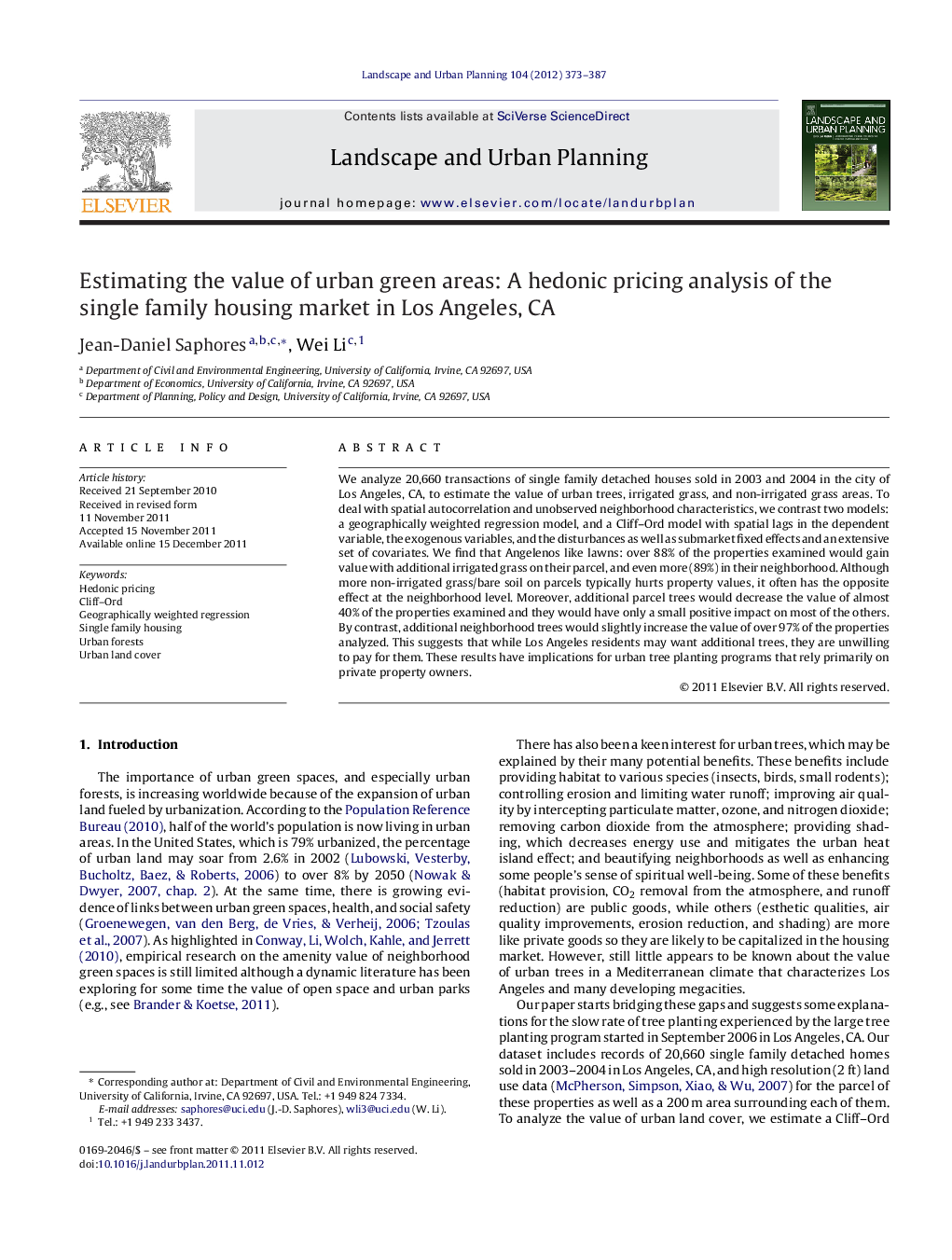| کد مقاله | کد نشریه | سال انتشار | مقاله انگلیسی | نسخه تمام متن |
|---|---|---|---|---|
| 1049663 | 1484651 | 2012 | 15 صفحه PDF | دانلود رایگان |

We analyze 20,660 transactions of single family detached houses sold in 2003 and 2004 in the city of Los Angeles, CA, to estimate the value of urban trees, irrigated grass, and non-irrigated grass areas. To deal with spatial autocorrelation and unobserved neighborhood characteristics, we contrast two models: a geographically weighted regression model, and a Cliff–Ord model with spatial lags in the dependent variable, the exogenous variables, and the disturbances as well as submarket fixed effects and an extensive set of covariates. We find that Angelenos like lawns: over 88% of the properties examined would gain value with additional irrigated grass on their parcel, and even more (89%) in their neighborhood. Although more non-irrigated grass/bare soil on parcels typically hurts property values, it often has the opposite effect at the neighborhood level. Moreover, additional parcel trees would decrease the value of almost 40% of the properties examined and they would have only a small positive impact on most of the others. By contrast, additional neighborhood trees would slightly increase the value of over 97% of the properties analyzed. This suggests that while Los Angeles residents may want additional trees, they are unwilling to pay for them. These results have implications for urban tree planting programs that rely primarily on private property owners.
► Angelenos may want additional urban trees but they are unwilling to pay for them.
► Additional parcel trees would decrease the value of 39% of properties examined.
► More neighborhood trees would increase the value of 97% of properties in our sample.
► Angelenos like lawns both on their properties and in their neighborhood.
► Our Cliff–Ord and our geographically weighted regression models give similar results.
Journal: Landscape and Urban Planning - Volume 104, Issues 3–4, 15 March 2012, Pages 373–387